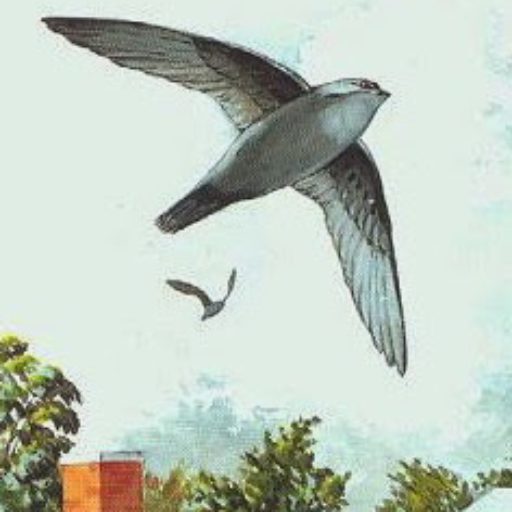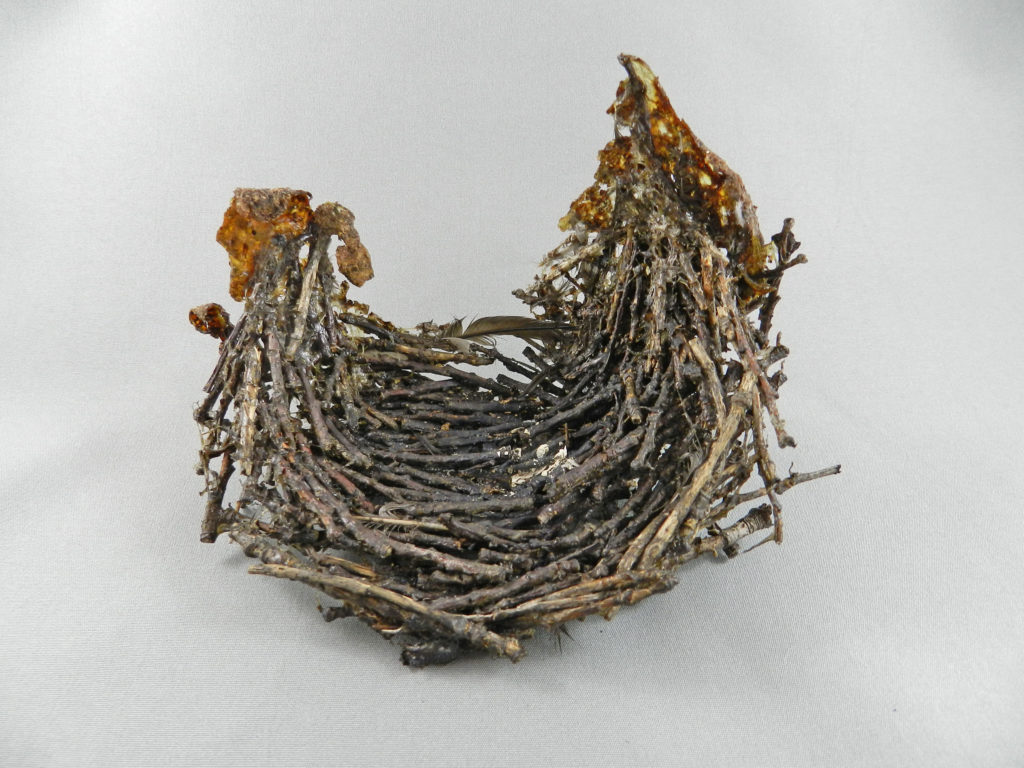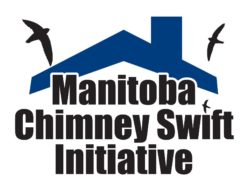
Last week marked the beginning of our official monitoring season, and many of us bundled up and strapped down to watch for our feathered friends! It’s been windy… Hopefully not too many hats have been lost. We are now halfway through our official MCSI/NRMP nights. Our first two official monitoring nights were on May 24th and May 28th. The next official monitoring nights are on June 1st and June 5th. A friendly reminder to send in your swift reports and datasheets to mbchimneyswift@gmail.com. While it is fine to wait to send them in later in the season, we appreciate receiving the datasheets soon after each monitoring session so that we can stay on top of organizing the data and updating the blog.
Keep reading for a rundown of what’s been going in the swift world so far. 😊
Reports from Barb and Rob Stewart indicate that nest building is underway in St. Adolphe. Within an hour and a half on May 16th, they were able to observe swifts entering and exiting all five nesting chimneys! In Barb’s words, “Some days are just so much more fun than others at the chimney side…today was one of those glory days”. Well said, Barb!
In St. Francois Xavier, Mike and Michele Tumber are monitoring the church and have reported four entries into the chimney on both May 24th and May 28th, also noting that there is lots of swift activity around overall.
Frank Machovec is monitoring the St Joachim RC Church Site in La Broquerie and observed one entry into each of the two chimneys on May 24th. This number increased on May 28th, with four entries into the ‘large chimney’ and one in the ‘small chimney’.
Selkirk, Lockport and Lower Fort Garry have been busy places for swifts this year, and thankfully we have a great group of folks keeping an eye on things! Thanks to Gerald Machnee, Robert Hempler, Winona Hook, Pattie and Dennis Beatty, Nia Massey, Linda Adie, Fred and Nettie Jensen, Tim Verbiwski, Veronica White, and Joanne Tuckwell. On May 24th at the Selkirk Mental Health Centre, two entries were observed in each of the infirmary chimney, yellow-brick chimney, T04 (powerhouse tower), and T02 (courtyard tower). Robert and Winona observed several entries and exits in the west tower (T01), suggesting nest building. On May 28th, Pattie and Dennis noted three swifts entering T02 (the courtyard tower), Veronica observed one entry into T01, while Nia and Linda observed two entries into the ‘yellow brick chimney’ and two entries into T04 (powerhouse tower). On May 29th, Robert observed a morning entry into the chimney at the infirmary, suggesting nest building. On May 30th, Gerald observed a swift entering the chimney at the apartments in Selkirk. As for Lower Fort Garry, Joanne Tuckwell observed swifts using the chimney in the Fur Loft building and Gerald Machnee observed two swifts enter the Men’s House chimney. Tim Verbiwsk and Gerald Machnee have been keeping an eye on Lockport bridge. While swift activity there has overall been irregular so far this year, Tim did observe two entries on May 11th and one entry on May 26th.
Ken Wainwright and crew are monitoring the sites in Dauphin. Ken had observed around 30 swifts flying overhead on May 23rd while watching a nesting chimney, so was expecting to see large numbers of swifts entering roosting chimneys during the official roost monitoring session on May 24th (the following night). However, only eight swifts were seen at one time on May 24th, indicating that many of the swifts from the previous night may have moved on. All four sites that were monitored on May 24th in Dauphin had entries.
In St Jean Baptiste, Luc Blanchette has been monitoring the church. On May 22nd he observed approximately 13 swifts flying around, with four of them entering the chimney. On May 29th, the number of swifts that entered the chimney increased to ten, out of eleven swifts seen in total!
Marissa and Aynsley have been covering Providence College in Otterburne. On May 24th, a total of four swifts circled the three chimneys around sunset, before one dropped into the chimney near the bell tower, another one dropped into the ‘skinny chimney’ and the remaining two swifts dropped into the ‘large chimney’. On May 28th, Aynsley noted four entries into the ‘large chimney’ and one in the ‘skinny chimney’.
In Winnipeg, our volunteers have been busy at a variety of sites. Donna Milovitch watched the River Manor Apartments on May 24th and May 28th. While she did not see any swifts enter the chimney on the first night, she saw 89 swifts entering the chimney on the 28th. David Wiebe monitored the Assiniboine School and saw two swifts enter the chimney with an additional four swifts flying around. Linda Curtis counted one swift entering the chimney at the Moorgate Apartments. Garry Budyk monitored at Pro Tac Roofing and caught two entries into the chimney. Blaire Barta, who has been monitoring the Behavioural Health Foundation in St. Norbert, did not observe any entries on May 24th but did see one entry on May 28th. Amanda Shave watched the Thunderbird Apartments, which was on our list of priority sites to determine ‘residence’ status. In an exciting turn of events, Amanda observed one swift enter the chimney, confirming that this chimney is being used by swifts!
As we continue our monitoring season, here are some general reminders to keep in mind:
Many of the sites we monitor are potential nest sites. The first 30 minutes of monitoring is considered “daytime”, where we hope to see if the sight is being used to roost, nest or both!
Arrival – Around mid May, swifts begin arriving in Manitoba. The arrival stage is characterized by the first reported sightings of Chimney Swifts in spring. Birds can be identified both by vocalizations and visual sightings. You may be able to hear the distinct chittering or see small cigar-shaped birds in small numbers foraging near known sites.
Chimney Swifts typically enter their sites within ½ hour of sunset (½ hour before to ½ hour after sunset = the roosting hour), for the remainder of the night. They do so by clinging to the rough wall interiors. Sometimes roost entries may occur earlier than the roosting hour, or swifts are in the air and are unaccounted for as it gets darker. Morning departures occur within ½ hour of sunrise (½ hour before to ½ hour after sunrise) in good weather conditions. Poor weather conditions may delay departure.
Behaviour of Chimney Swifts can be variable and interpreting it can be helped by what is going on in the environment. We commonly see roosting entries before the roosting hour on cold and rainy days, or when foraging conditions seem to be good. On days with poor weather conditions, swifts may use chimneys as refuges to wait out bad weather.

Nest Building – Watch for daytime entries and exits! Swifts will be active in the morning, afternoon, and early evening. During late May and early June, breeding pairs will start to gather small twigs from dead trees and glue them to the wall of the chimney with saliva forming a cup-shaped nest. Once the nest is large enough to hold one egg, sticks are added making it larger to hold more eggs. Nest building continues until the end of the incubation period. Once the eggs are hatched, the nest building stops and the adult swifts focus on feeding their young.
While watching your nest site, you may see a breeding pair approach a chimney together and enter one after the other. They may instead approach and only one swift drop in, while the other circles and flies off. On the other hand, single birds may approach and enter the chimney. Single or two consecutive exits may follow a time lag. The two important time intervals (duration-in (entry to exit) and between-visits (exit to entry)) that characterize different stages of nesting are variable during nest building.
Happy swift-watching!
-Aynsley and Marissa
